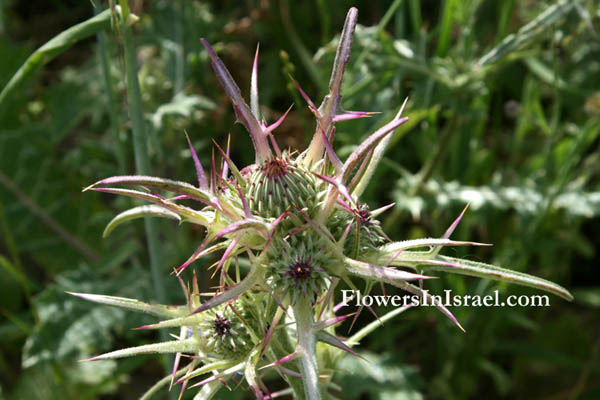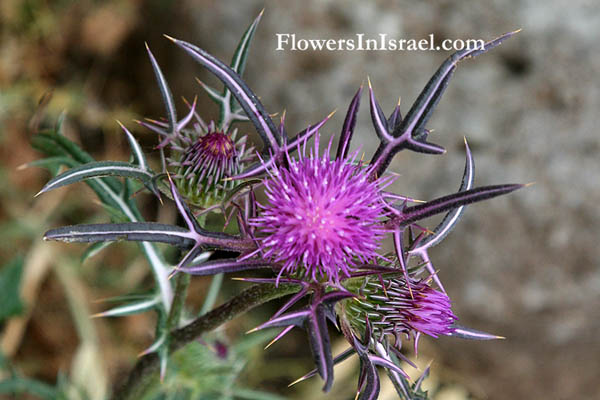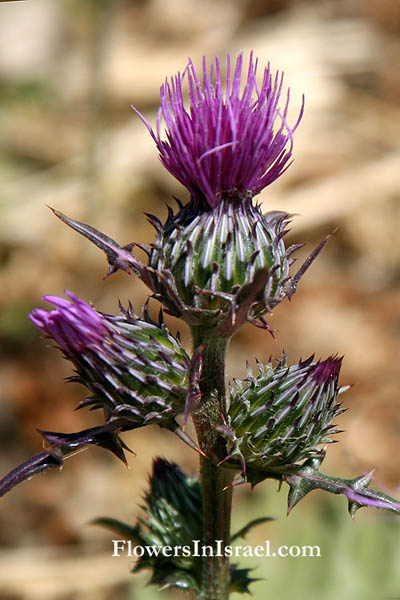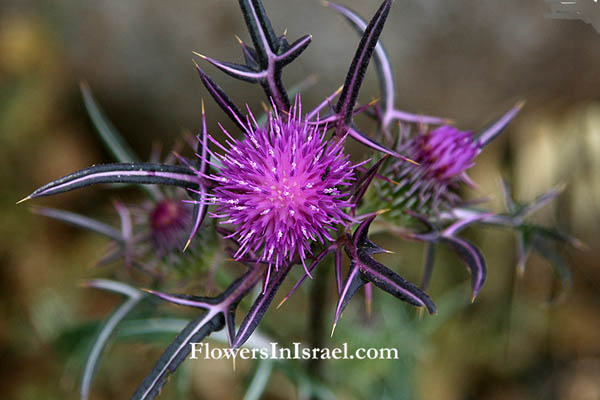Hebrew: ברקן סורי, Arabic: خرفيش
| Scientific name: | Notobasis syriaca (L.) Cass. | |
| Synonym name: | Cirsium syriacum (L.) Gaertn., Cnicus syriacus (L.) Roth | |
| Common name: | Syrian Thistle | |
| Hebrew name: | ברקן סורי | |
| Arabic name: | خرفيش | |
| Plant Family: | Compositae / Asteraceae, מורכבים |

|
| Life form: | Annual | |
| Spinescence: | Leaves, bracts | |
| Stems: | 80-150 cm; usually branched and bluish above | |
| Leaves: | Alternate, rosette, entire, dentate or serrate, spinescent | |
| Inflorescence: | Indeterminate heads (also called capitula) | |
| Flowers: | Purple, spinescent bracts | |
| Fruits / pods: | Achene 5-5mm, brown; outer pappus-satae 13-15mm, inner pappus hairs 1-2mm | |
| Flowering Period: | March, April, May | |
| Habitat: | Batha, Phrygana, Disturbed habitats | |
| Distribution: | Mediterranean Woodlands and Shrublands, Semi-steppe shrublands, Shrub-steppes, Deserts and extreme deserts, Montane vegetation of Mt. Hermon | |
| Chorotype: | Mediterranean | |
| Summer shedding: | Ephemeral |

Derivation of the botanical name: Notobasis, Greek notis "moisture," notios, notos, noton "moist damp, rainy" and basis "base, pedestal," referring to the habitat. syriaca, syrian. Cirsium , Greek kirsion, a kind of thistle, in turn from kirsos, "a swollen vein or welt," because thistles were often used as a remedy against such things. cnicus, a Latin name of the safflower, from Greek knikos. The Hebrew name: ברקן, barkan, "brier", of uncertain origin; Judges 8:16: "He took the elders of the town and taught the men of Sukkoth a lesson by punishing them with desert thorns and briers (הברקנים, barkanim, barqanim)".



|